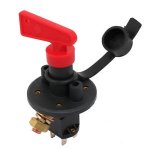You'd need to leave the
inverter permanently connected via the resistor in order to keep the internal capacitor charged, the problem with this is that while you're keeping the capacitor charged the
inverter is also drawing standing current.
If your
inverter takes 1A standing current and you used a 1 ohm resistor across the switch contact then this would keep the capacitor in the
inverter charged up to 1v lower than
battery voltage(approx 11v) so you'd only get a very small spark when you made the connection proper because the capacitor would remain 11/12ths charged.
Problem with this is you'd have 11/12ths current still flowing so you'd hardly benefit from switching the
inverter 'off'.
What's the issue with the spark anyway? You're not repeatedly connecting and disconnecting are you? If you are then there's no need, just use the on off switch at the
inverter,

